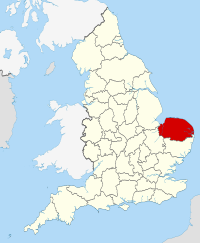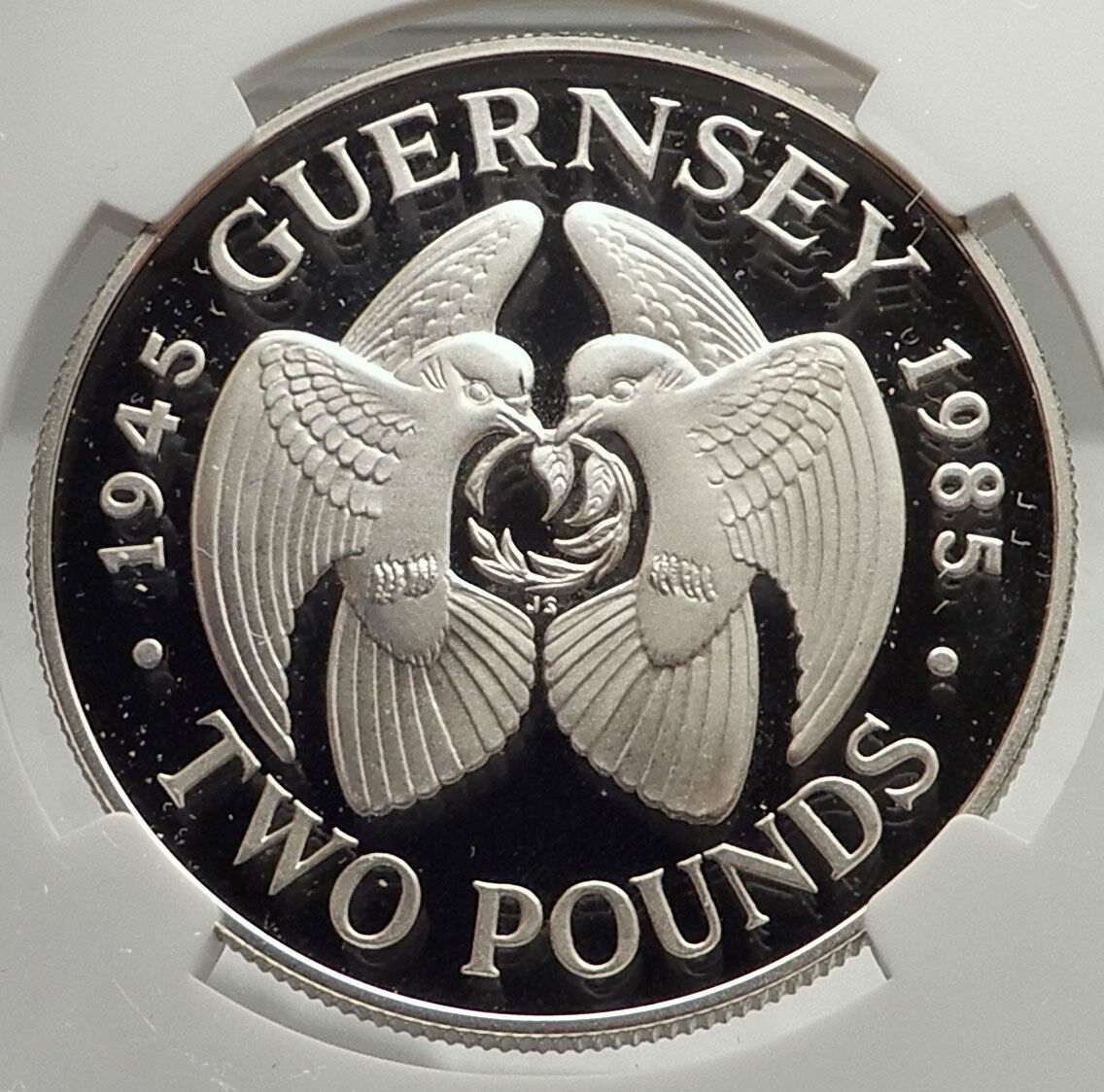|
England – Norfolk – Norwich – Conder Token
1796 Copper Half-Penny Conder Token 28.49mm (9.5 grams)
Reference: D&H 33
Certification: NGC MS 64
BN 3504375-014
DUNHAM / AND / YALLOP / GOLD / SMITHS, shield supported by Hope standing head slightly to right, supporting anchor.
NORWICH HALFPENNY 1 7 9 6 / DUNHAM & YALLOP, over door of shop in beaded circle.
You are bidding on the exact item pictured, provided with a Certificate of Authenticity and Lifetime Guarantee of Authenticity.
 Norfolk is a county in East Anglia in England. It borders Lincolnshire to the northwest, Cambridgeshire to the west and southwest, and Suffolk to the south. Its northern and eastern boundaries are the North Sea and to the northwest, The Wash. The county town is Norwich. With an area of 2,074 square miles (5,370 km2) and a population of 859,400, Norfolk is a largely rural county with a population density of 401 per square mile (155 per km2). Of the county’s population, 40% live in four major built up areas: Norwich (213,000), Great Yarmouth (63,000), King’s Lynn (46,000) and Thetford (25,000). Norfolk is a county in East Anglia in England. It borders Lincolnshire to the northwest, Cambridgeshire to the west and southwest, and Suffolk to the south. Its northern and eastern boundaries are the North Sea and to the northwest, The Wash. The county town is Norwich. With an area of 2,074 square miles (5,370 km2) and a population of 859,400, Norfolk is a largely rural county with a population density of 401 per square mile (155 per km2). Of the county’s population, 40% live in four major built up areas: Norwich (213,000), Great Yarmouth (63,000), King’s Lynn (46,000) and Thetford (25,000).
 The Broads is a network of rivers and lakes in the east of the county, extending south into Suffolk. The area is not a national park although it is marketed as such. It has similar status to a national park, and is protected by the Broads Authority. The Broads is a network of rivers and lakes in the east of the county, extending south into Suffolk. The area is not a national park although it is marketed as such. It has similar status to a national park, and is protected by the Broads Authority.
Norfolk was settled in pre-Roman times, with camps along the higher land in the west, where flints could be quarried. A Brythonic tribe, the Iceni, inhabited the county from the 1st century BC to the end of the 1st century AD. The Iceni revolted against the Roman invasion in AD 47, and again in 60 led by Boudica. The crushing of the second rebellion opened the county to the Romans. During the Roman era roads and ports were constructed throughout the county and farming was widespread.
Situated on the east coast, Norfolk was vulnerable to invasions from Scandinavia and Northern Europe, and forts were built to defend against the Angles and Saxons. By the 5th century the Angles, after whom East Anglia and England itself are named, had established control of the region and later became the “north folk” and the “south folk”, hence, “Norfolk” and “Suffolk”. Norfolk, Suffolk and several adjacent areas became the kingdom of East Anglia (one of the heptarchy), which later merged with Mercia and then with Wessex. The influence of the Early English settlers can be seen in the many place names ending in “-ton” and “-ham”. Endings such as “-by” and “-thorpe” are also common, indicating Danish place names: in the 9th century the region again came under attack, this time from Danes who killed the king, Edmund the Martyr.
In the centuries before the Norman Conquest the wetlands of the east of the county began to be converted to farmland, and settlements grew in these areas. Migration into East Anglia must have been high: by the time of the Domesday Book survey it was one of the most densely populated parts of the British Isles. During the high and late Middle Ages the county developed arable agriculture and woollen industries. Norfolk’s prosperity at that time is evident from the county’s large number of medieval churches: out of an original total of over one thousand, 659 have survived, more than in the whole of the rest of Great Britain. The economy was in decline by the time of the Black Death, which dramatically reduced the population in 1349.
Kett’s Rebellion occurred in Norfolk during the reign of Edward VI, largely in response to the enclosure of land by landlords, leaving peasants with nowhere to graze their animals and the general abuses of power by the nobility. It was led by Robert Kett a yeoman farmer, who was joined by recruits from Norwich and the surrounding countryside. His group numbered some 16,000 by the time the rebels stormed Norwich on 29 July 1549 and took the city. Kett’s rebellion ended on 27 August when the rebels were defeated by an army under the leadership of John Dudley, 1st Duke of Northumberland at the Battle of Dussindale. Some 3,000 rebels were killed. Kett was captured, held in the Tower of London, tried for treason, and hanged from the walls of Norwich Castle.
By the late 16th century Norwich had grown to become the second-largest city in England, but over one-third of its population died in the plague epidemic of 1579, and in 1665 the Great Plague again killed around one-third of the population. During the English Civil War Norfolk was largely Parliamentarian. The economy and agriculture of the region declined somewhat. During the Industrial Revolution Norfolk developed little industry except in Norwich which was a late addition to the railway network.
In the 20th century the county developed a role in aviation. The first development in airfields came with the First World War; there was then a massive expansion during the Second World War with the growth of the Royal Air Force and the influx of the American USAAF 8th Air Force which operated from many Norfolk airfields.
The local Army regiments were the Royal Norfolk Regiment and the Norfolk Yeomanry.
During the Second World War agriculture rapidly intensified, and it has remained very intensive since, with the establishment of large fields for growing cereals and oilseed rape.
Conder Tokens, also known as 18th Century Provincial Tokens, are a form of privately minted token coinage struck and used during the latter part of the 18th Century and the early part of the 19th Century in England, Anglesey and Wales, Scotland, and Ireland.
The driving force behind the need for token coinage was the shortage of small denomination coins for everyday transactions. However, the demand was fueled by other factors such as the Industrial Revolution, population growth, and the preponderance of counterfeit circulating coins. Because the government made little effort to ameliorate this shortage, private business owners and merchants took matters into their own hands, and the first tokens of this type were issued in 1787 to pay workers at the Parys Mine Company. By 1795, millions of tokens of a few thousand varying designs had been struck and were in common use throughout Great Britain.
Collecting Conder tokens has been popular since shortly after they were first manufactured, resulting in the availability today of many highly preserved examples for collectors. The demarcation of what is or is not considered a Conder token is somewhat unclear; however, most collectors consider Conder tokens to include those indexed originally by James Conder or later by Dalton & Hamer.
|








 Norfolk is a county in East Anglia in England. It borders Lincolnshire to the northwest, Cambridgeshire to the west and southwest, and Suffolk to the south. Its northern and eastern boundaries are the North Sea and to the northwest, The Wash. The county town is Norwich. With an area of 2,074 square miles (5,370 km2) and a population of 859,400, Norfolk is a largely rural county with a population density of 401 per square mile (155 per km2). Of the county’s population, 40% live in four major built up areas: Norwich (213,000), Great Yarmouth (63,000), King’s Lynn (46,000) and Thetford (25,000).
Norfolk is a county in East Anglia in England. It borders Lincolnshire to the northwest, Cambridgeshire to the west and southwest, and Suffolk to the south. Its northern and eastern boundaries are the North Sea and to the northwest, The Wash. The county town is Norwich. With an area of 2,074 square miles (5,370 km2) and a population of 859,400, Norfolk is a largely rural county with a population density of 401 per square mile (155 per km2). Of the county’s population, 40% live in four major built up areas: Norwich (213,000), Great Yarmouth (63,000), King’s Lynn (46,000) and Thetford (25,000).  The Broads is a network of rivers and lakes in the east of the county, extending south into Suffolk. The area is not a national park although it is marketed as such. It has similar status to a national park, and is protected by the Broads Authority.
The Broads is a network of rivers and lakes in the east of the county, extending south into Suffolk. The area is not a national park although it is marketed as such. It has similar status to a national park, and is protected by the Broads Authority. 




